Disclaimer: This blog post contains affiliate links. If you make a purchase through these links, I may earn a small commission at no additional cost to you. Learn More. Thank you for supporting our garden community.
Foraging Elderberries From an Elderberry Bush
Last Updated: August 7, 2024
Foraging elderberries from the elderberry bush offers a rewarding and fulfilling activity that connects you with nature and enables you to enjoy the numerous benefits of elderberry. In this comprehensive guide, we explore how to easily identify elderberries, harvest them responsibly, discover their natural habitat, and explore the various uses for these versatile berries, including elderberry syrup.
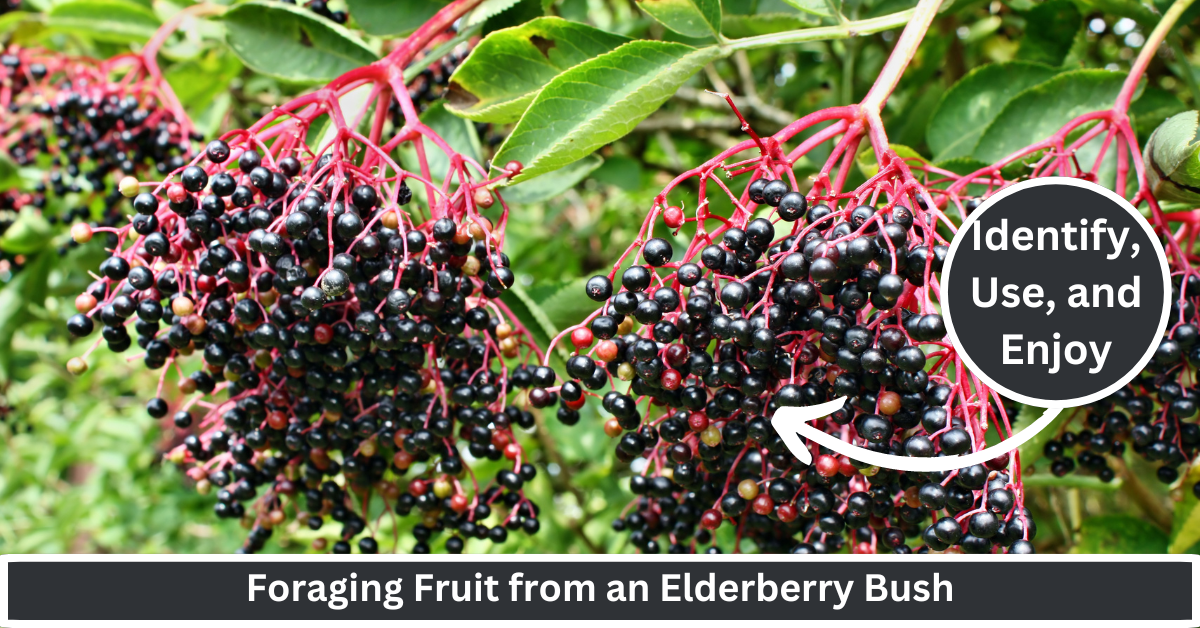
Unfortunately, my elderberries this year were infested with fruit fly larvae, meaning I never got to make jam. I left the bag open and on the counter overnight; that was not a good idea!
Elderberry Bush: Foraging For Fruit
Here’s what you’ll learn from reading this post:
- Identification of Elderberries: This guide provides detailed descriptions to help you identify elderberry bushes. It educates you on the appearances of an elderberry bush throughout its growth stages, ensuring accurate identification before consumption.
- Harvesting Techniques: This post offers a step-by-step guide on how to properly and responsibly harvest elderberries, including the best timing, the importance of proper sanitation, and using cluster harvesting methods to avoid damaging the plant.
- Natural Habitat and Foraging Locations: You will be informed about the typical habitats where elderberry bushes are found. This post emphasizes the importance of seeking permission for foraging on private lands and encourages respect for the environment during the activity.
- Various Uses of Elderberries: This blog post explores multiple uses for elderberries, detailing their culinary applications, medicinal benefits, the role in making natural dyes, and their use in cosmetics and skincare. It also includes safety advice, warning that elderberries must be cooked to eradicate toxic compounds, ensuring they are safe for consumption.
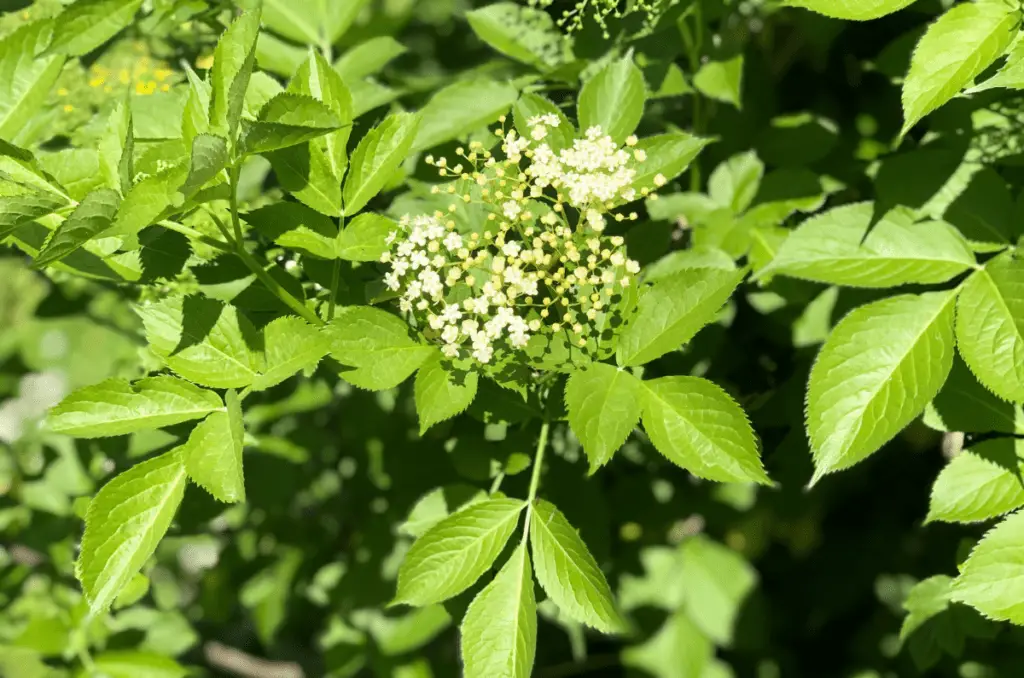
How to Identify Elderberries
Identifying elderberries is crucial to ensure a successful foraging experience. An elderberry bush can grow more than 10 feet tall, and they possess a distinctive appearance that makes them easy to recognize. Here are some key characteristics to search for:
- Leaf Structure: Elderberries have compound leaves with 5-9 serrated leaflets typically arranged opposite each other on the stem.
- Flowers: In late spring or early summer, elderberry bushes produce clusters of tiny, white or cream-colored flowers in a flat-topped arrangement known as an umbel, emitting a pleasant fragrance.
- Berries: By late summer or early fall, elderberries ripen and turn into a deep purplish-black color. The berries grow in clusters, resembling bunches of small grapes.
To learn more about foraging skills, check out our posts on foraging dandelions, foraging for wild apples, and foraging for riverbank grapes.
Habitat of Elderberries and Where to Find Them
Elderberries are native to many regions globally and are generally located in moist areas such as:
- Woodlands: Look for elderberry shrubs along the edges of woodlands, where they receive some sunlight but are still protected by some shade.
- Riverbanks and Wetlands: Elderberries thrive in damp environments, making riverbanks and wetlands ideal locations to find these berries.
- Fields and Meadows: Sometimes, elderberry shrubs can be found in open fields or meadows, especially those that have a water source nearby, such as a small lake.
Remember always to seek permission from landowners before foraging on private property. Additionally, be mindful of your surroundings and the ecosystem, ensuring you leave no trace and only take what you need.
How to Harvest Elderberries
Once you’ve identified the elderberry bushes, it’s time to harvest the delicious fruits they yield. Here’s a step-by-step guide to ensure a successful harvest:
- Timing: Wait until the berries are fully ripe before harvesting to achieve their peak flavor and nutritional content. Ripe elderberries will be soft, plump, and have a dark color. This is usually in late summer or early fall.
- Sanitation: Before harvesting, ensure you have clean hands and suitable containers for collecting the berries. It’s also advisable to wear gloves as the berries can stain your hands.
- Cluster Harvesting: Use a pair of sharp scissors or pruning shears to cut the entire cluster at the stem to avoid damaging the delicate elderberry clusters. This method allows for efficient harvesting without causing harm to the plant.
And please, avoid eating the berries raw! it is very tempting, even for me, as the berries look so succulent and delicious. However, they need to be cooked before they are safe to consume.
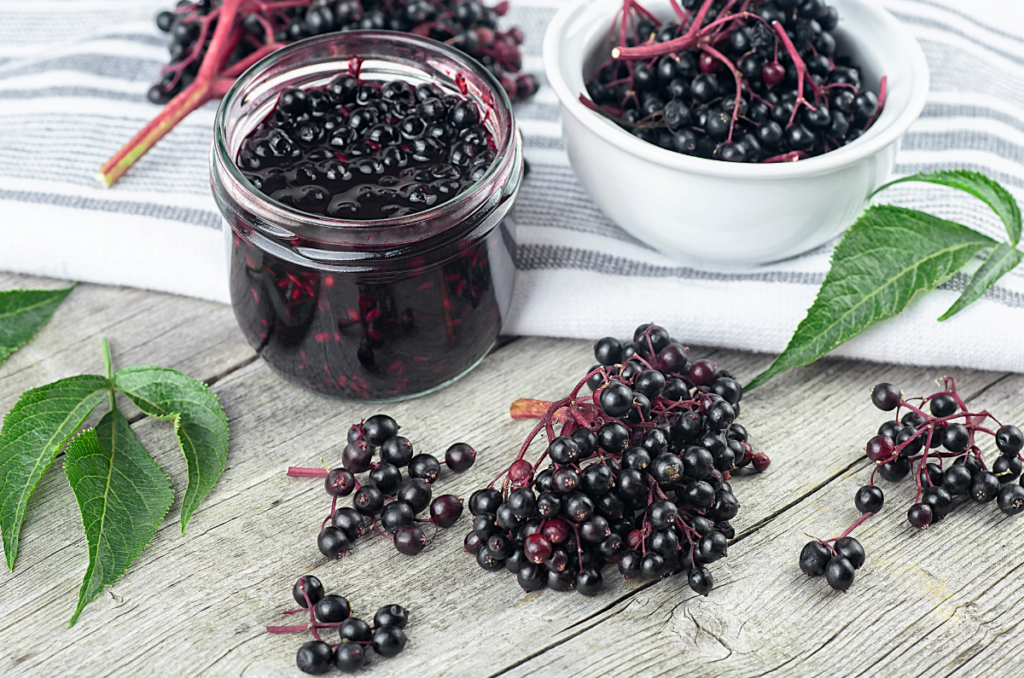
Different Uses for Elderberries
Elderberries are not only delicious but offer a variety of uses. It’s important to know that elderberries are poisonous when raw, meaning they have to be cooked before eating. Cooking ensures the evaporation of the toxic cyanide compounds. Here are some common ways to enjoy these versatile berries:
- Culinary Delights: Elderberries can be used in various culinary creations such as pies, jams, jellies, syrups, and even elderberry wine. Check out this elderberry jam recipe from Our Gabled Home. Their rich flavor adds a delightful twist to any dish.
- Medicinal Benefits: Traditionally, elderberries have been used for their medicinal properties. They are rich in antioxidants and are believed to boost the immune system, reduce cold and flu symptoms, reduce cold duration, and promote overall well-being. However, there is little concrete evidence for this.
- Natural Dyes: Elderberries can be used to create natural dyes for fabrics and crafts. They produce a beautiful deep purple hue, perfect for adding a touch of nature to your creations.
- Cosmetics and Skincare: Elderberry extract is a common ingredient in cosmetic products and skincare formulations. It is known for its soothing and anti-inflammatory properties, making it beneficial for sensitive or irritated skin.
Frequently Asked Questions
They can grow up to 15 feet tall and have clusters of white flowers in the spring that turn into small, dark purple berries in the summer. The leaves are opposite each other on the stem and are compound, with several leaflets branching off from a central stalk.
Elderberry bushes grow best in consistently moist, fertile soil, oftentimes in a woodland or on a riverbank.
Elderberries are only safe to eat after they have been cooked. Eating elderberries off the bush means that you will ingest the toxins associated with raw elderberries. The cooking process safely removes these toxins.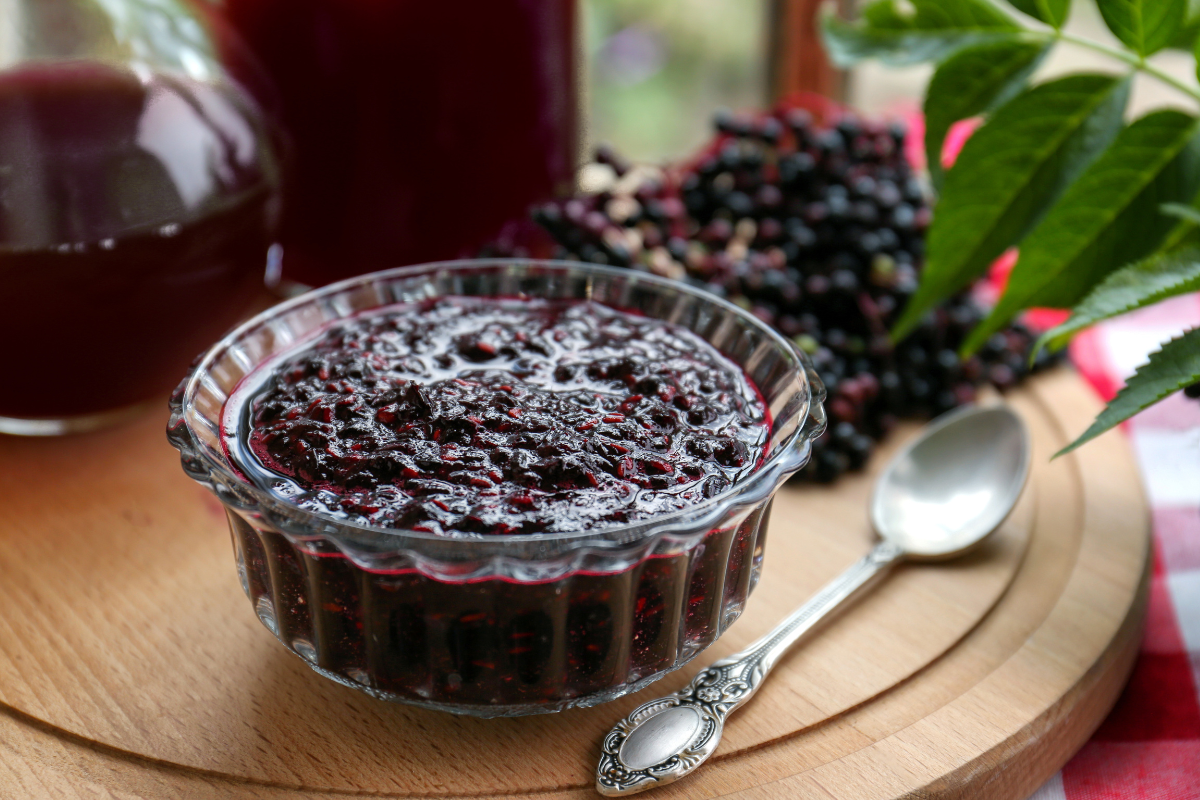
Mature elderberry bushes can reach a height of 10 to 15 feet tall. However, most will only reach a height of around 8 – 9 feet in their native environment.
Even More Gardening Ideas
Here are a few more posts to help you with your foraging adventures!
- Foraging Dandelions: A Comprehensive Guide
- Elderberry Bush: Foraging for Fruit
- Wild Apples: Foraging for Nature’s Bounty
Products
For all-purpose organic fertilizers, check out Arber.
To buy organic, non-GMO lavender seeds, check out SeedsNow.
For a wide selection of perennial garden plants, check out Nature Hills Nursery.
For gardening equipment, check out Bootstrap Farmer
Conclusion
Foraging elderberries is an enjoyable and rewarding activity that allows you to connect with nature and reap the many benefits these berries offer. Remember always to be respectful of the environment, follow responsible harvesting practices, and enjoy the journey of discovering the wonders of elderberries!
Remember, always forage safely and responsibly. If you are uncertain about the identification of any plant or berry, consult a local expert or guidebook before consuming.
If you have any questions or concerns, feel free to leave them in the comments. Also, share your foraging experiences with us in the comments below.
If you found this article helpful, consider signing up for our email newsletter for new gardening ideas every Monday and Friday!
If you want to learn more about gardening, foraging, nature, and sustainability, check out The Real Gardener on Instagram, YouTube, and Pinterest.
Pin this post for later:
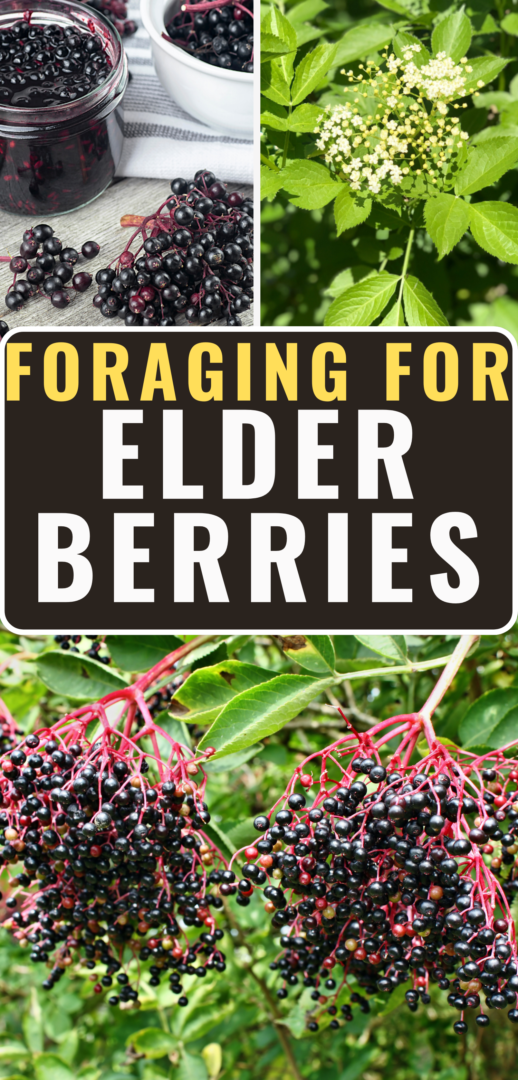
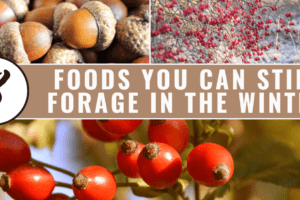
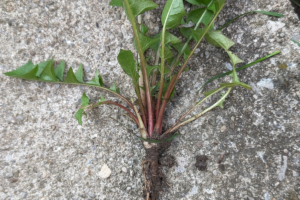
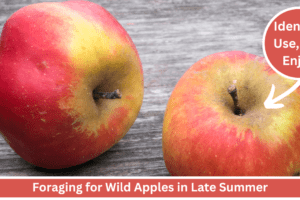
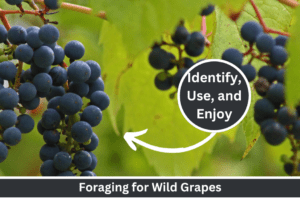
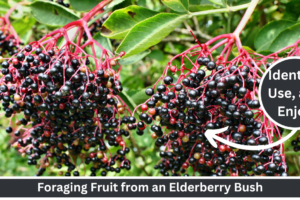
Leave a Reply